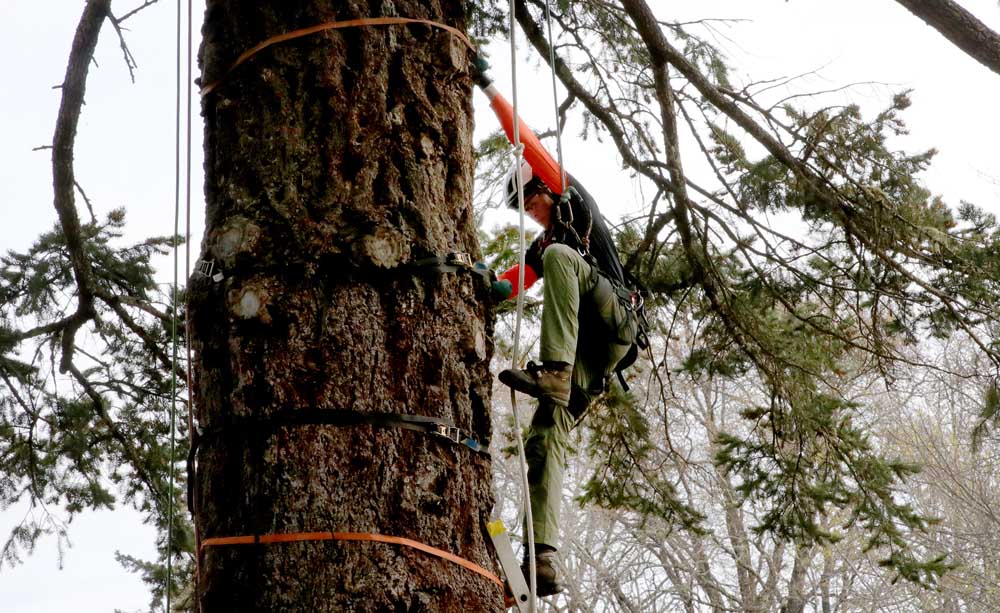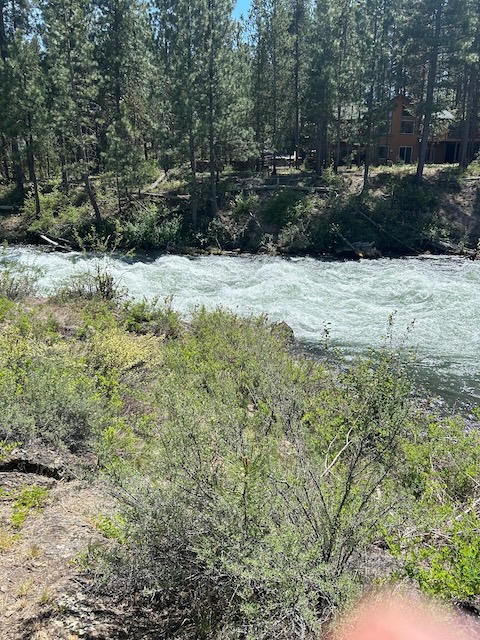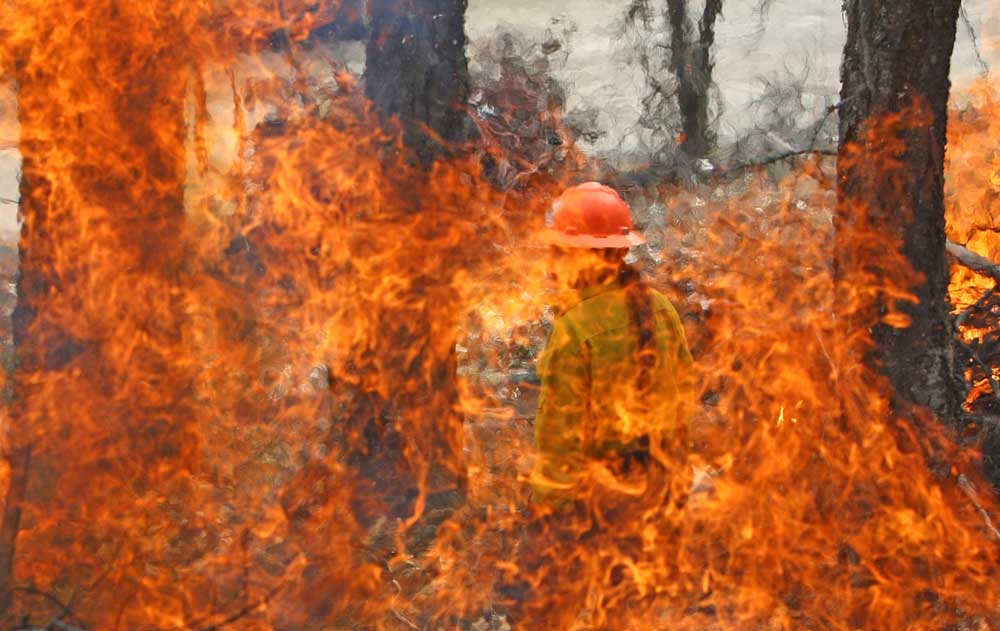Navigating Nature: Pro tree climbers test themselves in Rogue River competition
Published 4:30 pm Saturday, April 6, 2024

- Charles Lystrup of Eugene begins his way up for the Belayed Speed Climb event during the Southern Oregon Regional Tree Climbing Competition in Rogue River Saturday morning.
Rogue River’s Palmerton Park was filled with the sounds of zipping ropes, the clinking of carabiners and whoops and hollers from some of the region’s most skilled tree climbing professionals and spectators Saturday for the Southern Oregon Regional Tree Climbing Competition.
Organized by the Pacific Northwest Chapter of the International Society of Arboriculture, the event drew 30 participating tree climbers from as far away as Bolivia and British Columbia, Canada.
The competitors took part in five events across the park, testing their technique on various tree-climbing scenarios.
“They compete in the five preliminary events and then the best climbers (with the highest scores after the preliminary events) move on to Sunday’s master challenge,” said Mike Oxendine, volunteer coordinator for the competition.
“The events are designed to mimic real life work scenarios and things that professional arborists do in their practice,”Oxendine said. “It’s an educational event where we’re trying to use industry-best practice and technology to advance the craft of our horticulture and professional tree climbing.”
Those five challenges included the ascent, belayed-speed climb, throwline, work-climb and aerial rescue events.
The ascent event involved climbers hooking up to mechanical devices and using smooth technique to climb up and ring a bell at the 65-foot mark of a tree as fast as possible.
One of the first to test his skills on the ascent event was Galen Staats of Central Point.
“It was great, I’m pumped, right now, I’m still kind of breathless,” Staats said following the intense climb. “Basically, it’s like you’re climbing a ladder really fast but you’re climbing the single rope, and that’s basically all there is to it.”
An experienced arborist with Canopy Tree Care in Talent, Staats was attending the competition for the first time.
“I haven’t had a lot of practice with aerial rescue, so I’m looking forward to that one and getting my feet wet,” Staats said, adding that he was glad to be “hanging out with everyone.”
At the belayed speed climb event, Canadian D.J. Neustaeter was climbing a large Douglas fir, utilizing strength and agility to climb ladder and navigate tree branches to ring the bell as fast as possible.
“Every competitor has a different approach, but like any sports there’s some strategy but there’s also just the element of getting after it,” Neustaeter said. “You always want to watch where your ropes are, because if you get tangled up near a rope that’s usually a problem.”
Neustaeter was visiting the Rogue Valley for the first time, flying into Medford from British Columbia.
“I haven’t been this far south in Oregon and it’s beautiful out here,” Neustaester said. “I absolutely love coming out to these things to see the competitors, first-timers but also people that have been doing these things for 20-plus years.”
The three other events, throwline, work climb and aerial rescue, challenged competitors with their own unique obstacles.
“In the throwline, every professional arborist shows up to a job to do tree pruning or removal or whatever it is in the canopy of a tree and they have to first get their ropes into the tree … they throw (ropes with lead weights on the end) hundreds of feet in the air through a very specific target,” Oxendine said.
Possibly the most difficult of the five was the work-climb event, where climbers were tasked to navigate through four different stations in a massive tree to simulate using a handsaw and pull saw, as well as treading over a branch full of twigs and limbs before dismounting on a targeted area.
The aerial rescue event involved simulating rescuing a 180-pound dummy — named “Bob” — while going through necessary rescue steps.
“It’s very real-life and you have five minutes to do it,” Oxendine said, “This year’s competition, the scenario is somebody who had a diabetic emergency up in the tree.”
While many participants and activities center on having fun and enjoying friendly competition, a key focus for the Pacific Northwest Chapter of the International Society of Arboriculture was teaching safety, especially considering the unpredictable dangers arborists experience on the job.
“Being a professional arborist is inherently dangerous, we’re dealing with unknowns all the time and it all comes down to practicing safety every day in our profession,” Oxendine said.
On Sunday, the top three male competitors and top two female competitors faced off in the Master Challenge, competing in a wide range of skill challenges.
The Southern Oregon Regional Tree Climbing Competition was the first of five regional competitions across the west for arborists to challenge themselves and learn or drill themselves on staying safe in the trees.
To learn more about the Pacific Northwest Chapter of the International Society of Arboriculture, visit pnwisa.org.






